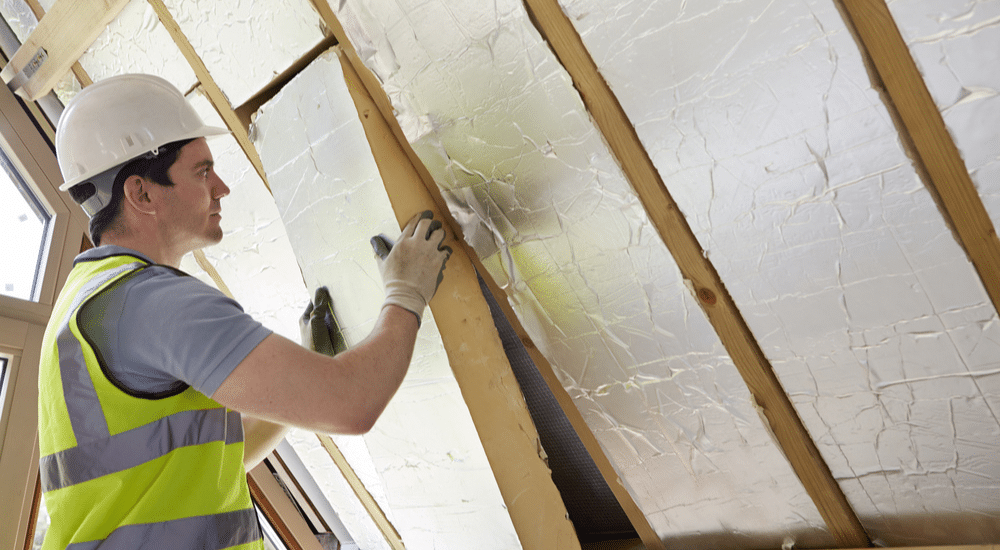Whether you’re building or buying a home, you want it to be a safe and welcoming environment for your family. Location and building materials tend to take priority when evaluating a home’s safety, and we forget how important a factor insulation is.
The health risks posed by insulation gained notoriety in the 1980s when asbestos—which at the time, was a commonly used building and insulation material—was recognised as being a carcinogen.
Since then, many new alternatives claiming to be healthy insulation solutions have entered the market, yet adequate studies have not been done, to confirm or refute them conclusively.
Most insulation materials nowadays come with ‘green’ certifications, although being a ‘green’ product does not mean they are free of Volatile Organic Compounds (VOCs).
What health risks could insulation pose?
There are safety risks to consider when picking a material for insulation that also needs to be fire-retardant and have no negative impact on indoor air quality.
Although this is a separate topic that needs to be addressed, it is worth keeping this in mind when looking for healthy insulation options.
The main health concern with regard to insulation has always been cancer. The International Agency for Research on Cancer (IARC) has stated that fibreglass, mineral wool and acoustic insulations are not classified as carcinogens.
Fibreglass insulation, however, is known to cause allergies in some people and can cause itchiness and irritation when it comes into contact with skin.
Cellulose is a popular option for insulation, yet tests have not concluded that it is not carcinogenic. Professionals state that toxicology tests need to be done on the dust from cellulose building insulation and pure cellulose fibres to determine whether they pose a risk for people suffering from asthma or other lung-related ailments.
Spray foam insulation is another commonly used insulator that has an ingredient called methylene diphenyl diisocyanate, believed to cause lung damage and asthma.
Do organic materials make healthy insulation options?
It can be argued that since organic options have minimal (or no) off-gassing or additives, they pose less of a health concern.
Organic insulators do come with a slight drawback—the natural odour. This can be a difficult compromise for most people to make, and considering these materials cost more and are less readily available, they don’t top the list of viable alternatives.
Mineral wool for example, though inorganic, is touted as one of the best solutions for healthy insulation as it is simple in its composition and has no VOC count.
So it is hard to make a claim that only organic could be the safest in this case.
Indirect factors that can negatively affect the health of your family
Formaldehyde is a chemical compound that can be found in some types of insulation. High levels of it in a household can cause the residents to suffer from a variety of allergic reactions such as irritation of the eyes, nose, skin and throat.
It has also been recognised as a carcinogenic substance and is not often found in many building materials today. Statistics suggest that 90% of residential fibreglass insulation is formaldehyde-free—you just have to be careful not to be in the 10%.
Mould can grow anywhere that there is moisture and lead to a number of potential health risks such as asthma, allergies and even depression if left unaddressed. Mould feeds on organic materials and even if some materials claim to be mould-resistant, mould can grow on any surface if it has the basic requirements.
Fibreglass, spray foam insulation and mineral wool are all inorganic materials and therefore don’t support mould growth; if you’re using these materials, just make sure that the insulation space doesn’t gather excessive moisture.
Cellulose on the other hand is organic and can easily become a breeding ground for mould.
Corrosion to pipes, wires and fasteners can occur due to bad insulation. This is most commonly seen with cellulose insulation as it is routinely applied with certain sulphates to make the material flame-retardant.
Though corrosion is not directly harmful to a person’s health, it can result in releasing corroded particles into the air which can cause dizziness, breathing difficulty and even birth defects.
What is the best insulation to use in your home?
Considering all the areas we discussed in this article, it is safe to say that it’s hard to suggest a common solution for every home. Mineral wool can be considered one of the best, but it too has its own drawbacks.
We hope this article emphasises the necessity of good insulation with minimal or preferably no health risks. If you are building a home or buying one, get an assessment from a professional building biologist. It’s better to know the best option for your unique requirement than to settle for a general solution.

